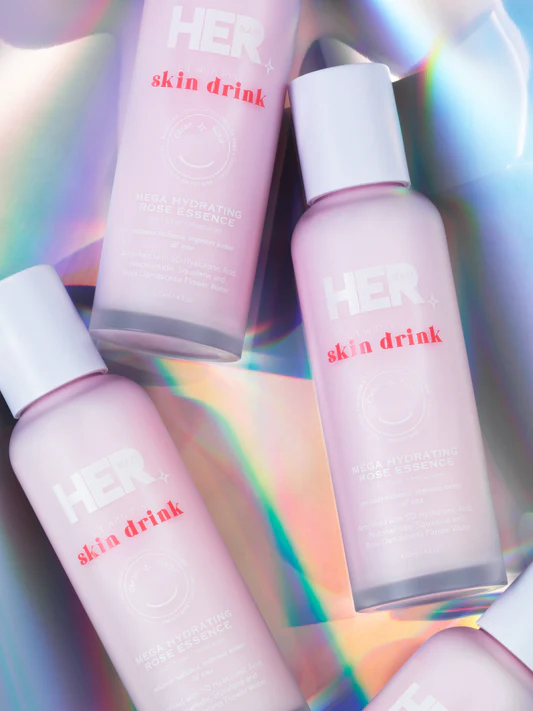Why Moisturizers are Essential for Dry Skin
Moisturizers play a critical role in maintaining healthy skin, especially for those with dry skin. They work by:
- Replenishing lost moisture
- Strengthening the skin’s natural barrier
- Preventing moisture evaporation
- Improving skin texture and elasticity
- Protecting against environmental damage
For individuals with dry skin, using the right moisturizer can mean the difference between flaky, tight skin and a smooth, comfortable complexion.
Key Ingredients to Look for in a Moisturizer for Dry Skin
When selecting a moisturizer for dry skin, prioritize products containing these powerhouse ingredients:
1. Humectants
- Hyaluronic Acid: Attracts and retains moisture
- Glycerin: Draws water into the skin
- Panthenol: Hydrates while soothing irritation
2. Emollients
- Ceramides: Repair the skin’s protective barrier
- Shea Butter: Deeply nourishes dry patches
- Squalane: Lightweight yet effective moisture
3. Occlusives
- Petrolatum: Locks in moisture
- Dimethicone: Creates protective seal
- Natural Oils: Jojoba, argan, or marula oil
Types of Moisturizers for Dry Skin
1. Creams
- Best for: Severe dryness
- Texture: Rich and thick
- Examples: CeraVe Moisturizing Cream, Eucerin Advanced Repair
2. Lotions
- Best for: Moderate dryness
- Texture: Lightweight but hydrating
- Examples: Cetaphil Moisturizing Lotion, Aveeno Daily Moisturizing
3. Ointments
- Best for: Extremely dry, cracked skin
- Texture: Heavy, greasy
- Examples: Aquaphor Healing Ointment, Vaseline Petroleum Jelly
How to Choose the Best Moisturizer for Your Dry Skin
Consider these factors when selecting a moisturizer:
- Severity of Dryness
- Mild: Light lotions with hyaluronic acid
- Moderate: Creams with ceramides
- Severe: Ointments with petrolatum
- Skin Sensitivities
- Fragrance-free for reactive skin
- Non-comedogenic if prone to clogged pores
- Climate Considerations
- Lightweight for humid weather
- Richer formulas for dry climates
- Time of Day
- Light layers for daytime
- Intensive treatments at night
Application Tips for Maximum Benefits
To get the most from your moisturizer:
- Apply to Damp Skin – Pat face lightly with water before application
- Use Proper Amount – A pea-sized amount for face, more for body
- Massage Gently – Use upward strokes to boost circulation
- Layer Correctly – Apply after serums, before sunscreen
- Don’t Forget – Extend to neck, décolletage, and hands
Common Moisturizer Mistakes to Avoid
- Over-Exfoliating – Limits skin’s ability to retain moisture
- Using Hot Water – Strips natural oils from skin
- Skipping Nighttime Moisturizing – Skin repairs itself overnight
- Choosing Wrong Formula – Not matching product to skin’s needs
- Applying to Dry Skin – Less effective than on damp skin
When to See a Dermatologist
Consult a skin specialist if you experience:
- Persistent flaking or scaling
- Red, inflamed patches
- Deep cracks that bleed
- No improvement after 4 weeks of proper moisturizing
- Signs of infection (pus, increasing redness)
Top Recommended Moisturizers for Dry Skin
- Drugstore Favorite: CeraVe Moisturizing Cream
- Luxury Option: La Mer Crème de la Mer
- Natural Choice: First Aid Beauty Ultra Repair Cream
- Budget Pick: Vaseline Intensive Care Advanced Repair
- For Sensitive Skin: Vanicream Moisturizing Cream
Final Thoughts
Finding the right moisturizer for dry skin requires understanding your skin’s unique needs and how different ingredients work. With consistent use of an appropriate formula, most people with dry skin can achieve significant improvement in comfort and appearance within a few weeks.
Remember that skin needs change with seasons, age, and environment, so be prepared to adjust your moisturizing routine as needed. When in doubt, consult with a dermatologist who can recommend professional-grade solutions for persistent dryness.
